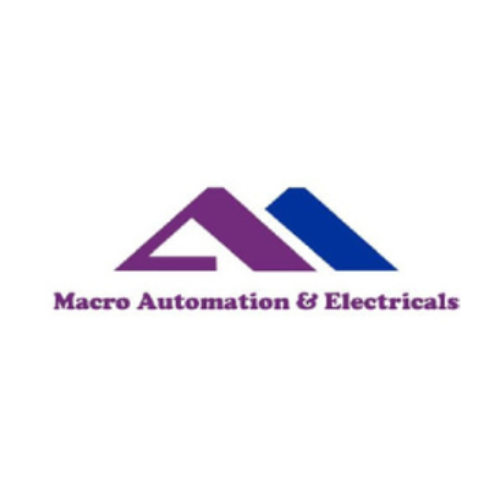- +91 9886004169
- info@unisolcommunications.com



Unisol offers a wide range of fiber optic loopback patch cords, providing efficient, reliable, and secure network testing solutions for various industries and applications. These loopback patch cords are designed to test and troubleshoot fiber optic networks and equipment. Equipped with different connector types, such as FC, LC, MTRJ, MPO, and SC, these patch cords ensure optimal compatibility with various fiber optic systems. Whether used in single-mode or multi-mode applications, Unisol’s loopback patch cords are a crucial tool for maintaining the performance and integrity of modern fiber optic networks.
A loopback patch cord is a specialized fiber optic cable that connects the transmitter port to the receiver port of a network device, creating a closed loop for signal testing. By sending the signal from the transmitter back to the receiver, the loopback patch cord enables network engineers to verify the functionality of transceiver modules, troubleshoot network faults, and perform diagnostic tests. It is particularly useful for fiber optic testing, port provisioning, and network diagnostics. These patch cords are commonly used in data centers, telecommunications networks, fiber-to-the-home (FTTH) installations, and in fiber optic research and development (R\&D) labs.
The ability to simulate data transmission within a network without requiring active data flow makes the loopback patch cord an invaluable tool for quality assurance, system testing, and repair. With the loopback patch cord, network administrators can ensure that their equipment is properly functioning, and any potential issues can be identified quickly and resolved before they impact the entire network.
Loopback patch cords are primarily used for testing fiber optic equipment and systems. By looping the signal from the output port back to the input port, these patch cords enable network engineers to test the transmission quality, measure signal loss, and identify any disruptions in the signal path. These tests help identify potential faults, including defective transceivers, faulty ports, and damaged fiber optic cables. In many network setups, port provisioning is required for ensuring proper configuration and network functionality. A loopback patch cord provides a convenient solution for testing unused ports on switches, routers, and other network devices, ensuring that all ports are active and working correctly. This allows for smoother and more efficient setup, as well as reducing the risk of potential configuration errors.
Network failures can disrupt business operations and lead to significant downtime. Using a loopback patch cord, technicians can perform tests to quickly pinpoint issues such as signal degradation, faulty components, or misconfigurations. By sending the signal through the loopback patch cord, technicians can identify weak links in the network and resolve them swiftly. In R\&D labs and testing environments, loopback patch cords are critical for simulating real-world conditions in fiber optic communication systems. These cords allow researchers and engineers to analyze network behavior, study signal propagation, and test new technologies without requiring a fully operational network setup. The loopback patch cord simplifies the process of testing new products and configurations before they are deployed in live networks.
The loopback patch cord is an economical solution for network testing and diagnostics. It eliminates the need for more expensive testing equipment and complex setups, providing a simple and efficient way to perform a variety of tests on fiber optic networks. Whether used in a small-scale enterprise network or a large data center, the loopback patch cord helps reduce testing costs while ensuring optimal performance. Unisol’s loopback patch cords are designed with secure connectors like FC, LC, MTRJ, MPO, and SC, which ensure a stable, tight fit. These high-quality connectors are equipped with locking mechanisms to prevent accidental disconnections during testing or when handling equipment. The reliability of these connectors guarantees stable signal flow and minimized interference, making the loopback patch cord an ideal choice for testing applications where signal integrity is critical.
Loopback patch cords come in a variety of connector types, including single-mode and multi-mode fiber options. This flexibility allows the patch cord to be used in a variety of network environments, whether you’re working with a high-bandwidth, long-distance single-mode system or a short-range, high-speed multi-mode network. This adaptability ensures that loopback patch cords can be used across various industries, including telecommunications, data centers, and industrial applications. The main function of the loopback patch cord is to allow for high-quality, low-loss signal transmission. The design of Unisol’s fiber optic loopback patch cords ensures minimal signal attenuation during testing, providing a realistic simulation of data transmission. This low insertion loss is essential for maintaining high-performance network testing and diagnostics, as any additional signal degradation can result in false readings or misdiagnosis.
One of the key advantages of the loopback patch cord is its simplicity and ease of use. Network engineers and technicians can quickly test ports, transceivers, and other network devices by inserting the loopback cord into the appropriate port. This simple process reduces setup time and ensures that technicians can focus on resolving issues instead of dealing with complex testing setups. The FC loopback patch cord is commonly used for single-mode applications where high-performance testing and diagnostics are required. The FC connector is known for its precision and reliability, making it ideal for environments that demand high-quality, low-loss connections. The LC loopback patch cord is often used in data centers and telecommunication networks, where high-density connections are required. The LC connector is compact, providing a space-efficient solution for managing a large number of fiber optic connections while ensuring optimal signal quality.
The MTRJ loopback patch cord is commonly used in environments where low-cost and simple testing solutions are needed. This connector type is often used for multi-mode fiber systems and is an excellent choice for troubleshooting and diagnostics. The MPO loopback patch cord is designed for high-density, high-bandwidth applications. With its multiple fiber cores, the MPO connector is ideal for testing multi-fiber systems, including those used in high-speed data center networks and telecom infrastructures. The SC loopback patch cord is used in both single-mode and multi-mode systems, offering reliable, secure, and stable connections for testing purposes. The SC connector is known for its durability and ease of use, making it a popular choice for network testing.
Loopback patch cords are widely used in the telecommunications industry to test network devices, switches, and routers. By performing tests on transceiver modules and other components, telecom operators can ensure that their equipment is functioning optimally, providing uninterrupted service to end-users. In data centers, loopback patch cords play a critical role in network diagnostics and maintenance. With large-scale network infrastructures, identifying faulty components quickly is essential for minimizing downtime. Loopback patch cords provide a simple and effective method for testing servers, switches, and routers, ensuring that the data center operates smoothly. The FTTH industry benefits greatly from the use of loopback patch cords, as they help ensure that fiber optic connections are correctly provisioned and functional before they are deployed in customer homes. These patch cords help providers test individual ports, ensuring that high-speed internet and telecom services are delivered without errors.
In industrial settings, loopback patch cords are used to test and maintain fiber optic systems that are integral to automation and monitoring systems. These systems rely on continuous, stable data transmission, and the loopback patch cord ensures that any potential faults can be diagnosed and resolved promptly. Unisol’s fiber optic loopback patch cords are essential tools for network testing, diagnostics, and troubleshooting. With their high-performance connectors and secure, reliable design, these patch cords provide an efficient, cost-effective solution for testing and maintaining fiber optic networks. Whether used for port provisioning, signal verification, or fault detection, the loopback patch cord is an indispensable tool for network engineers and technicians. By choosing Unisol’s loopback patch cords, users can ensure the optimal performance, reliability, and security of their fiber optic systems.
● Available in different connector types such as FC, LC, MTRJ, MPO, and SC, making them compatible with various fiber optic devices and ports.
● Suitable for both single-mode and multi-mode fiber optic connections, catering to a wide range of network types.
● Equipped with a locking mechanism to ensure secure, reliable connections and prevent accidental disconnections during testing.
● Routes the signal from the transmitter port back into the receiver port of a device, allowing for easy verification of transceiver functionality and network health.
● Provides an affordable solution for testing, diagnostics, and troubleshooting fiber optic components, without requiring additional complex equipment.
● Helps identify faults in fiber optic networks by comparing transmitted and received signal patterns, making it easier to detect defective nodes or components.
● Used in network restoration scenarios to help reroute signals and maintain network integrity during maintenance or fault isolation.
● Designed to minimize signal loss, ensuring reliable and high-quality performance in fiber optic testing environments.
● Commonly used in telecom, FTTX, datacom, R&D, and fiber optic lab testing for efficient diagnostics and port provisioning.
● Simple to plug and play, making it easy to quickly set up and use for various testing and diagnostic purposes.
● Built for long-term use, with rugged construction and protection to withstand regular handling and installation in various environments.
● Port testing
● Performance testing
● Troubleshooting
● Security audit
● Fiber optic testing
● Serial port testing
● Audio testing































Manufacturing Initiatives


Copyright © 2025 | Unisol Communications Pvt Ltd. | All rights reserved.